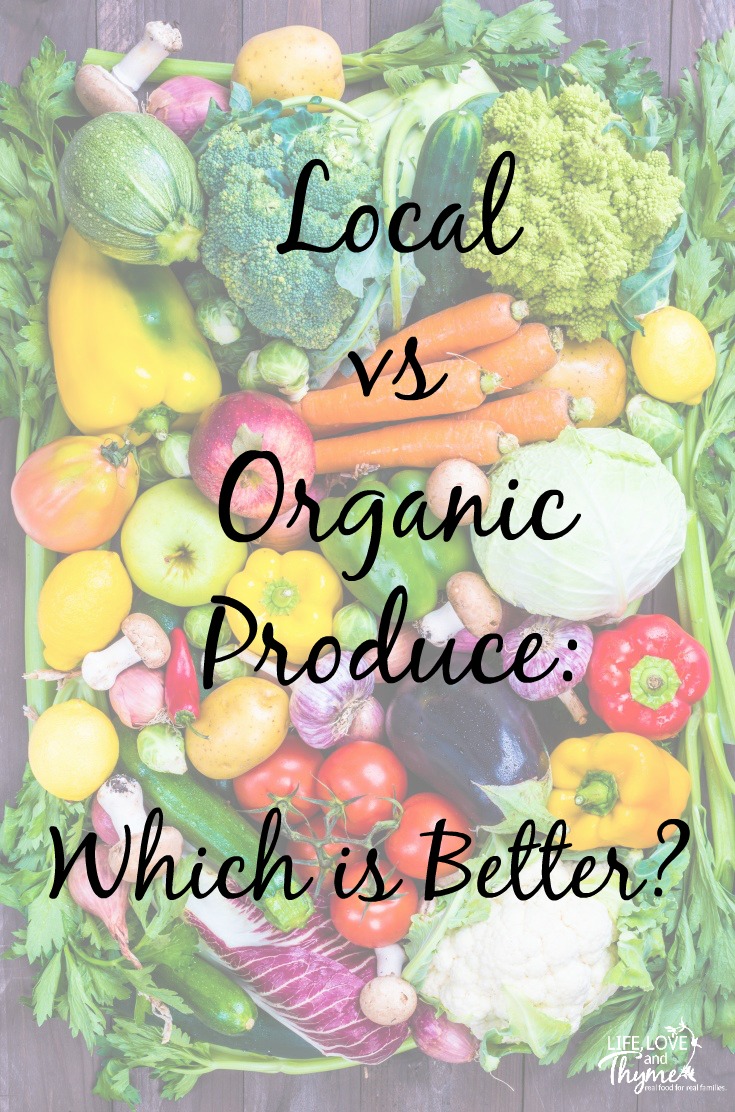Local vs organic produce? You hear that both are better…but which should you be focusing on first?
The problem is that produce is labeled in a way that is sometimes misinterpreted and even misunderstood. With a few easy tips, I can help you understand the difference between buying local vs organic produce by giving you the information you need to make an informed decision.
From understanding the regulations that must be followed when food is labeled organic or local to how the quality of food can fluctuate between each of them.

Local Produce
In order for a food product to labeled as local there are laws that must be followed. The USDA states that there is no defining factor in naming a food local, but in 2008’s Farm Act it was stated that local food must be produced in the location or region where the final produce is to be marketed. The total distance that the product can be transported is less than 400 miles from the farm to the store or farmer’s market.
Local does not necessarily mean that the product came from the farm right down the street. A radius of 400 miles is quite a distance for produce to travel. Keep in mind many states have their own regulations. In order for a food to be deemed local in some states, it needs to be grown within the state borders. Even different retailers and restaurants can have different regulations as to whether or not they label their produce as local. Be sure to ask what their rules are for labeling.
Purchasing and consuming local food has a few perks that people sometimes overlook. Buying local can ensure that you are keeping your money in the local economy and keeping the local farmers in business. Local produce is usually fresher, as the product starts to degrade the exact moment it is harvested. Shortening the time between farm to plate makes for a more nutritious meal in most cases. Keep in mind that local farms may use pesticides or other chemicals like GMOs.
Organic Produce
Organic produce is grown using methods that protect the environment and must avoid most synthetic materials. Things like pesticides and antibiotics can not be used in produce that will be marked as organic. The FDA has pretty straight forward rules as to what can be labeled organic or not. Some of the rules include soil and water quality, pest control and livestock practices, as well as rules for food additives.
Using GMOs is forbidden for a product to be labeled organic. Organic farms promote animal health and welfare, as one of the rules set forth by the USDA and FDA is that livestock to be sold as organic must have year round access to roam outside. Farms that are allowed to grow organic receive on-site inspections every year to make sure they are up to the standards.
The use of most synthetic materials is prohibited if a food hopes to receive the coveted title of organic. Things like synthetic pesticides, growth hormones, irradiation and synthetic fertilization will strip the produce of the organic title.
Local vs Organic
Remember, buying local produce does not necessarily mean the produce is coming from right down the road. Also keep in mind that local produce may still be exposed to synthetic materials. Freshness may be a well enough trade off for local food as it generally gets to your table faster than any other produce.
Organic follows so many regulations that it is actually pretty difficult for farmers and producers to label their food as organic. The trick here is to talk to the farmers, visit their farms and learn where your food comes from.
It is up to you to decide which one you would rather consume. There are pros and cons to each, like cost, freshness, and materials used in growth. And ideally, both local and organic is healthiest.
How do you weigh buying local vs organic produce?





